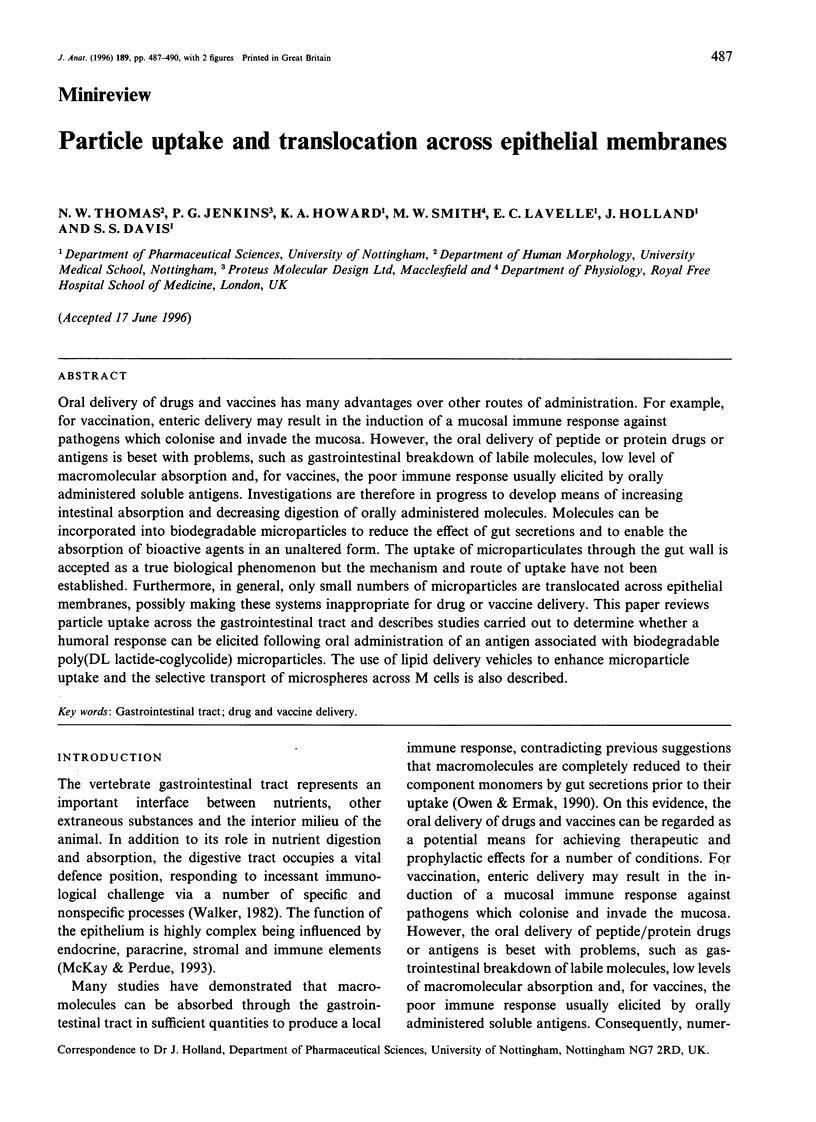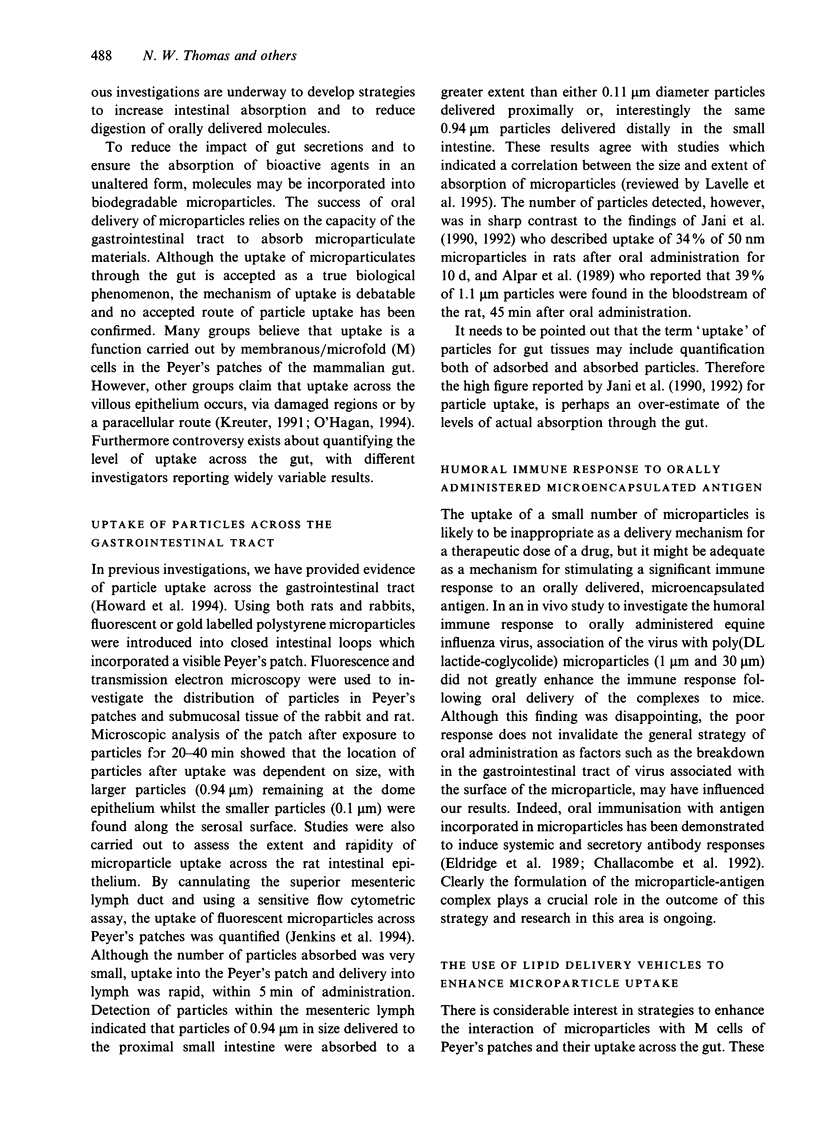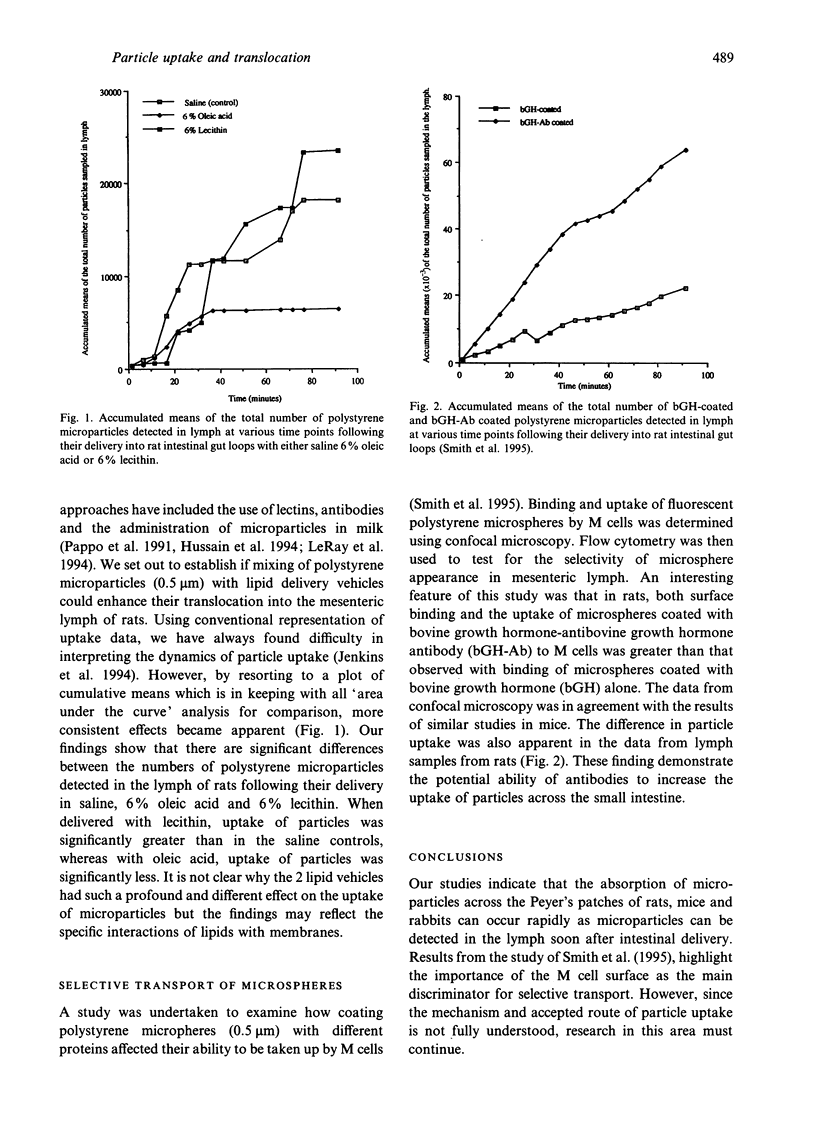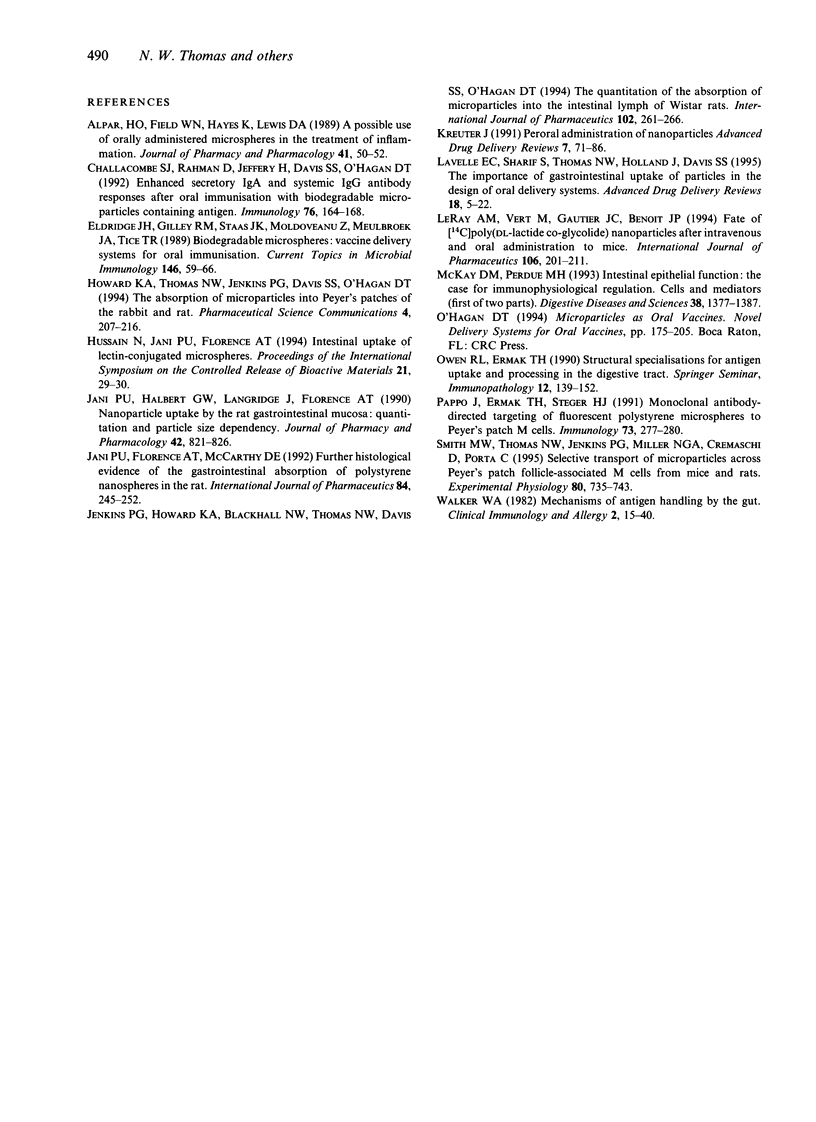Abstract
Oral delivery of drugs and vaccines has many advantages over other routes of administration. For example, for vaccination, enteric delivery may result in the induction of a mucosal immune response against pathogens which colonise and invade the mucosa. However, the oral delivery of peptide or protein drugs or antigens is beset with problems, such as gastrointestinal breakdown of labile molecules, low level of macromolecular absorption and, for vaccines, the poor immune response usually elicited by orally administered soluble antigens. Investigations are therefore in progress to develop means of increasing intestinal absorption and decreasing digestion of orally administered molecules. Molecules can be incorporated into biodegradable microparticles to reduce the effect of gut secretions and to enable the absorption of bioactive agents in an unaltered form. The uptake of microparticulates through the gut wall is accepted as a true biological phenomenon but the mechanism and route of uptake have not been established. Furthermore, in general, only small numbers of microparticles are translocated across epithelial membranes, possibly making these systems inappropriate for drug or vaccine delivery. This paper reviews particle uptake across the gastrointestinal tract and describes studies carried out to determine whether a humoral response can be elicited following oral administration of an antigen associated with biodegradable poly(DL lactide-coglycolide) microparticles. The use of lipid delivery vehicles to enhance microparticle uptake and the selective transport of microspheres across M cells is also described.
Full text
PDF



Selected References
These references are in PubMed. This may not be the complete list of references from this article.
- Challacombe S. J., Rahman D., Jeffery H., Davis S. S., O'Hagan D. T. Enhanced secretory IgA and systemic IgG antibody responses after oral immunization with biodegradable microparticles containing antigen. Immunology. 1992 May;76(1):164–168. [PMC free article] [PubMed] [Google Scholar]
- Eldridge J. H., Gilley R. M., Staas J. K., Moldoveanu Z., Meulbroek J. A., Tice T. R. Biodegradable microspheres: vaccine delivery system for oral immunization. Curr Top Microbiol Immunol. 1989;146:59–66. doi: 10.1007/978-3-642-74529-4_6. [DOI] [PubMed] [Google Scholar]
- Jani P., Halbert G. W., Langridge J., Florence A. T. Nanoparticle uptake by the rat gastrointestinal mucosa: quantitation and particle size dependency. J Pharm Pharmacol. 1990 Dec;42(12):821–826. doi: 10.1111/j.2042-7158.1990.tb07033.x. [DOI] [PubMed] [Google Scholar]
- McKay D. M., Perdue M. H. Intestinal epithelial function: the case for immunophysiological regulation. Cells and mediators (1). Dig Dis Sci. 1993 Aug;38(8):1377–1387. doi: 10.1007/BF01308592. [DOI] [PubMed] [Google Scholar]
- Owen R. L., Ermak T. H. Structural specializations for antigen uptake and processing in the digestive tract. Springer Semin Immunopathol. 1990;12(2-3):139–152. doi: 10.1007/BF00197502. [DOI] [PubMed] [Google Scholar]
- Pappo J., Ermak T. H., Steger H. J. Monoclonal antibody-directed targeting of fluorescent polystyrene microspheres to Peyer's patch M cells. Immunology. 1991 Jul;73(3):277–280. [PMC free article] [PubMed] [Google Scholar]
- Smith M. W., Thomas N. W., Jenkins P. G., Miller N. G., Cremaschi D., Porta C. Selective transport of microparticles across Peyer's patch follicle-associated M cells from mice and rats. Exp Physiol. 1995 Sep;80(5):735–743. doi: 10.1113/expphysiol.1995.sp003882. [DOI] [PubMed] [Google Scholar]


